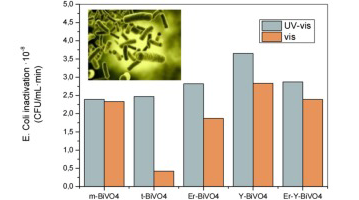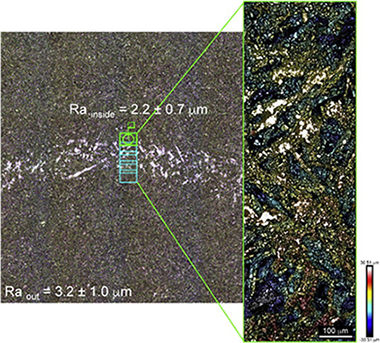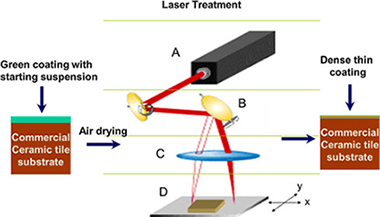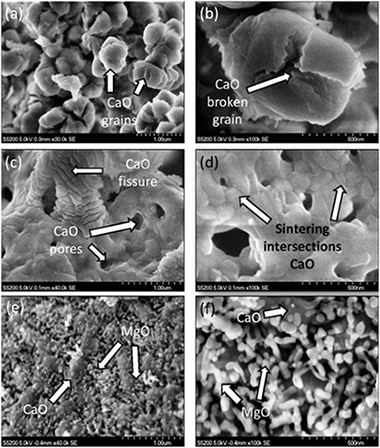Artículos SCI
2016
2016
Materiales y Procesos Catalíticos de Interés Ambiental y Energético
Photocatalytic Escherichia coli inactivation by means of trivalent Er3+, Y3+ doping of BiVO4 system
Adan, C; Marugan, J; Obregon, S; Colon, GApplied Catalysis A-General, 526 (2015) 126-131
Show abstract ▽

BiVO4 samples doped with different contents of Er3+ and Y3+ were prepared by a simple surfactant free hydrothermal method. X-ray diffraction reveals that the doped materials consist of a heterogeneous structure formed by a mixture of tetragonal and monoclinic phases, being found Er3+ and Y3+ co-doping clearly stabilize the tetragonal structure of BiVO4. The monoclinic BiVO4 samples shows a strong absorption in the visible light region leading to band-gap values of around 2.4eV while the tetragonal BiVO4 displays higher band-gap values of 2.9 eV. The photocatalytic activity of the catalysts was investigated for the oxidation of methanol and inactivation of Escherichia coli showing that all the BiVO4 catalysts are photocatalytically active in the oxidation of methanol and are able to inactivate more than 99.99% of bacteria not only under UV light but also under visible light irradiation. The results revealed that the co-doping of Er3+ and Y3+ into BiVO4 exhibited enhanced photocatalytic activity for methanol oxidation under simulated solar light irradiation. The inactivation of E.coli show similar results for the doped systems although in relative terms of activity the Er3+,Y3+-BiVO4 sample show a better use of the visible light, leading to a higher activity than P25-TiO2.
Septiembre, 2016 | DOI: 10.1016/j.apcata.2016.08.002
Materiales de Diseño para la Energía y Medioambiente
Sliding wear resistance of porous biomorphic sic ceramics
Lopez-Robledo, MJ; Gomez-Martin, A; Ramirez-Rico, J; Martinez-Fernandez, JInternational Journal of Refractory Metals & Hard Materials, 59 (2016) 26-31
Show abstract ▽

Porous biomorphic SiC ceramics were fabricated from four different wood precursors, three natural woods and one recycled wood product, by reactive infiltration of molten silicon into a carbon preform obtained from wood pyrolysis. Sliding wear resistance when sliding against a Si3N4 ball in air was studied. Tribological experiments were done with a pin-on-disk apparatus, under normal loads of 1 and 2 N, at a sliding velocity of 100 mm/s. The wear properties and the volume fraction of porosity were correlated. A commercial sintered SiC ceramic was also tested for comparison. The measured values of friction coefficient were in the range reported in literature for monolithic SiC ceramics under similar dry contact conditions. Two concurrent wear mechanisms are taking place: abrasion from the SiC debris and soft ploughing. The presence of an oxide tribolayer was assessed using energy dispersive X-ray analysis. Wear rates were found to scale with the composite porosity.
Septiembre, 2016 | DOI: 10.1016/j.ijrmhm.2016.05.004
Nanotecnología en Superficies y Plasma
Effect of Nickel and Magnesium on the Electrochemical Behavior of AA 1050 Alloys in Nitric Acid Solution
Garcia-Garcia, FJ; Skeldon, P; Thompson, GEJournal of the Electrochemical Society, 163 (9) (2016) C593-C601
Show abstract ▽
The study investigates the influence of nickel and magnesium additions to AA 1050 aluminum alloy on the electrochemical behavior of the alloy in nitric acid solution under conditions relevant to the lithographic and electronic industries. Magnesium and nickel additions are of interest, since they can improve the alloy properties for the printing process by improving reverse bending fatigue strength and thermal softening resistance, while nickel may provide uniform pitting during electrograining. Scanning electron microscopy was used to characterize the resulting surface morphologies. The addition of nickel led to an increase in the pitting and corrosion potentials; additionally, it reduced the rate of dissolution of intermetallic particles during anodic polarization and increased the rate of aluminum dissolution during cathodic polarization. In contrast, the addition of magnesium had negligible influence on the open circuit and pitting behaviors, since the magnesium is retained in solid solution and has negligible influence on the cathodic behavior of intermetallic particles, which dominate the corrosion behavior.
Septiembre, 2016 | DOI: 10.1149/2.1181609jes
Nanotecnología en Superficies y Plasma
Metallization of ceramic substrates by laser induced decomposition of coordination complexes
Rico, V; Lopez-Gascon, C; Espinos, JP; Lahoz, R; Laguna, M; Gonzalez-Elipe, AR; de la Fuente, GFJournal of the European Ceramic Society, 36 (2016) 2831-2836
Show abstract ▽

This work describes an in-situ Nd:YAG laser-assisted coating method to modify industrial glazed ceramic surfaces. The method makes use of a Cu polymer coordination complex, transformed via 1064 nm continuos wave (cw) laser irradiation, into a lustre-type glassy coating covering the ceramic substrate. The obtained coatings, with typical thicknesses ranging between 4 and 14 μm, become integrated onto the ceramic glaze via a sharp interface, as found by SEM observation. Diffuse Reflectance UV-vis spectroscopy shows that the lustre effect arises from surface plasmon resonant effects associated to the formation of nanometric size Cu particles dispersed throughout the glaze coating. This was confirmed by XPS analysis and other techniques showing that the laser decomposition treatment induces the redox transformation of the Cu (II) complexes, present in the original precursor, into reduced Cu (0) nanoparticles.
Septiembre, 2016 | DOI: 10.1016/j.jeurceramsoc.2016.04.016
Reactividad de Sólidos
On the relevant role of solids residence time on their CO2 capture performance in the Calcium Looping technology
Perejon, A; Miranda-Pizarro, J; Perez-Maqueda, LA; Valverde, JMEnergy, 113 (2016) 160-171
Show abstract ▽

The multicycle CO2 capture performance of CaO derived from natural limestone and dolomite has been investigated by means of thermogravimetry under realistic Calcium-Looping conditions, which necessarily involve high CO2 concentration and high temperatures in the calcination stage and fast transitions between the carbonation and calcination stages. Natural dolomite allows reducing the calcination temperature as compared to limestone while high calcination efficiency is maintained. This could help reducing the energy penalty of the CaL process thus further enhancing the industrial competitiveness for the integration of this technology into fossil fuel power plants. Importantly, the CO2 capture capacity of the sorbents is critically affected by the solids residence time in the carbonation and calcination stages within the feasible range in practice. Thus, carbonation/calcination residence times play a critical role on the multicycle CO2 capture performance, which has been generally dismissed in previous studies. A main observation is the enhancement of carbonation in the solid-state diffusion controlled phase, which is against the commonly accepted conception that the only relevant phase in the carbonation stage is the fast reaction-controlled stage on the surface of the solids. Thus, the CO2 capture efficiency may be significantly enhanced by increasing the solids residence time in the carbonator.
Septiembre, 2016 | DOI: 10.1016/j.energy.2016.07.028
- ‹ anterior
- 214 of 420
- siguiente ›














